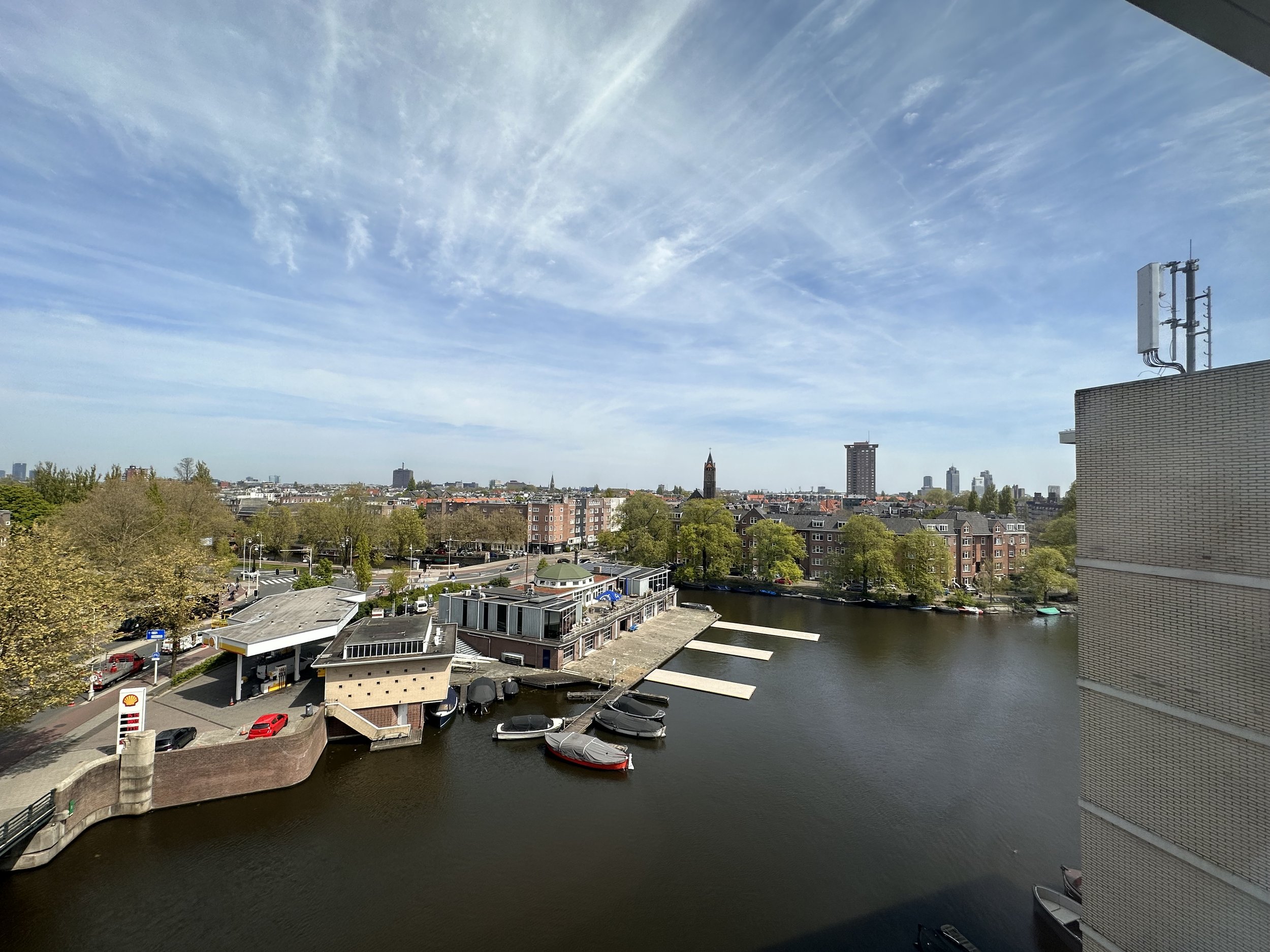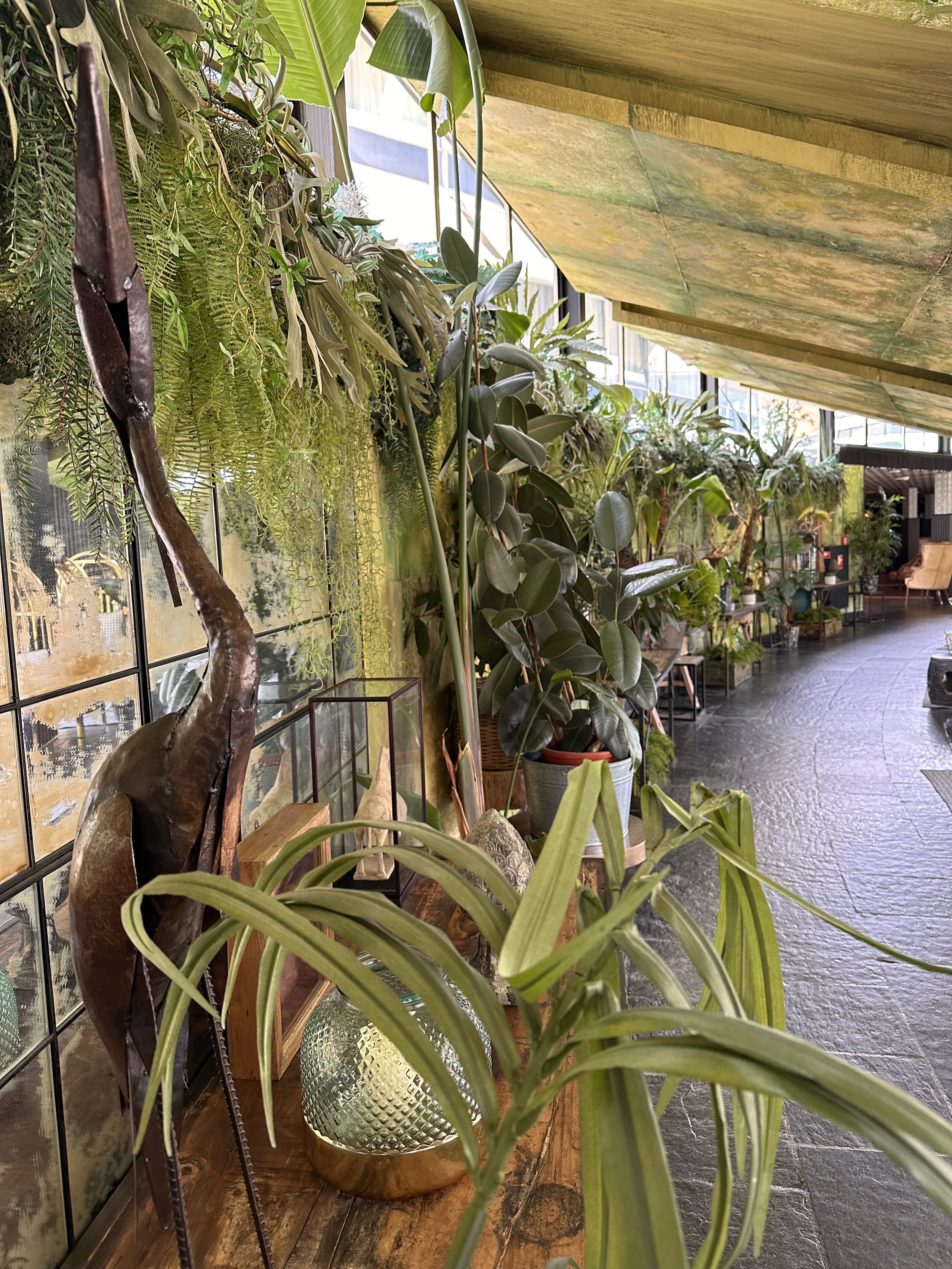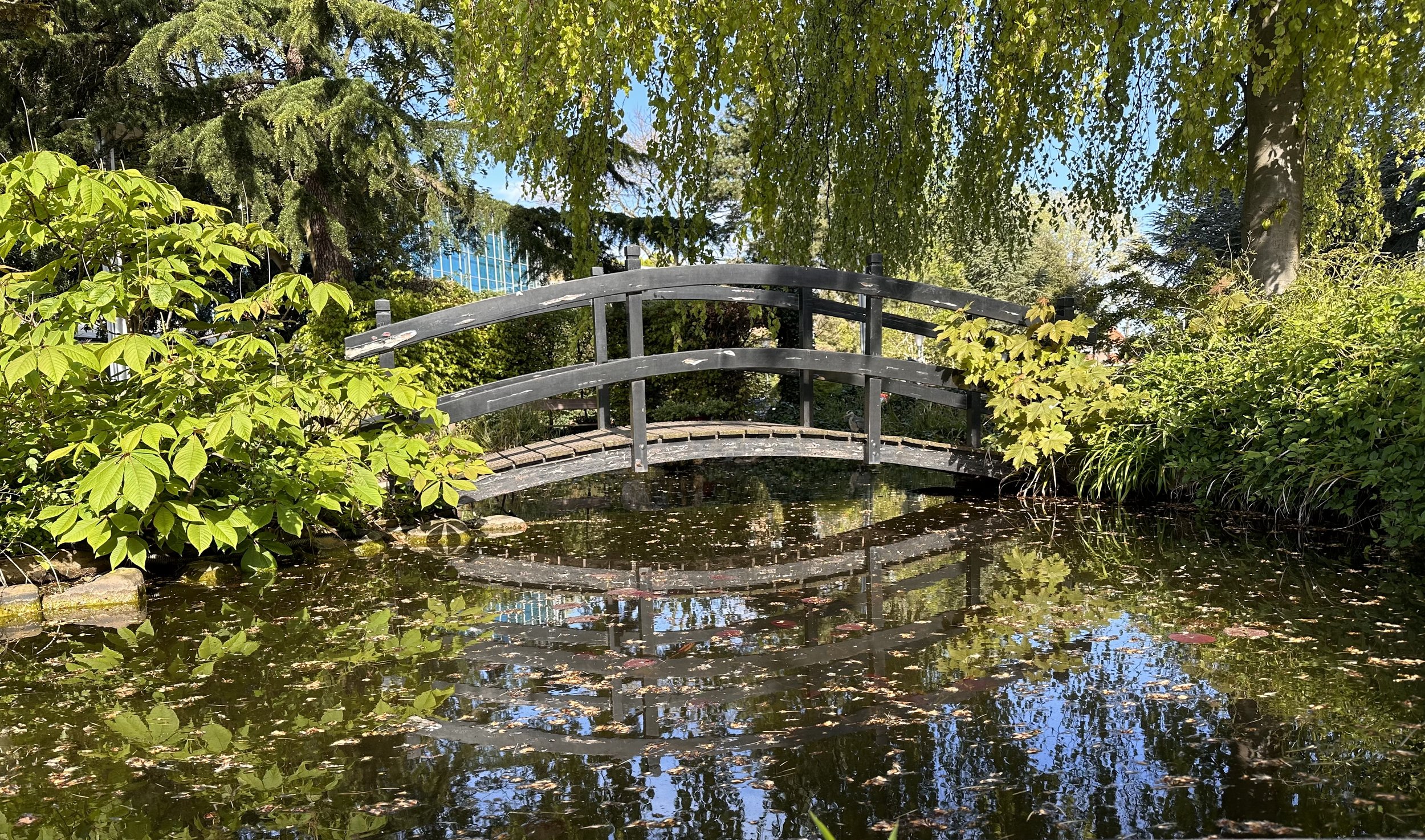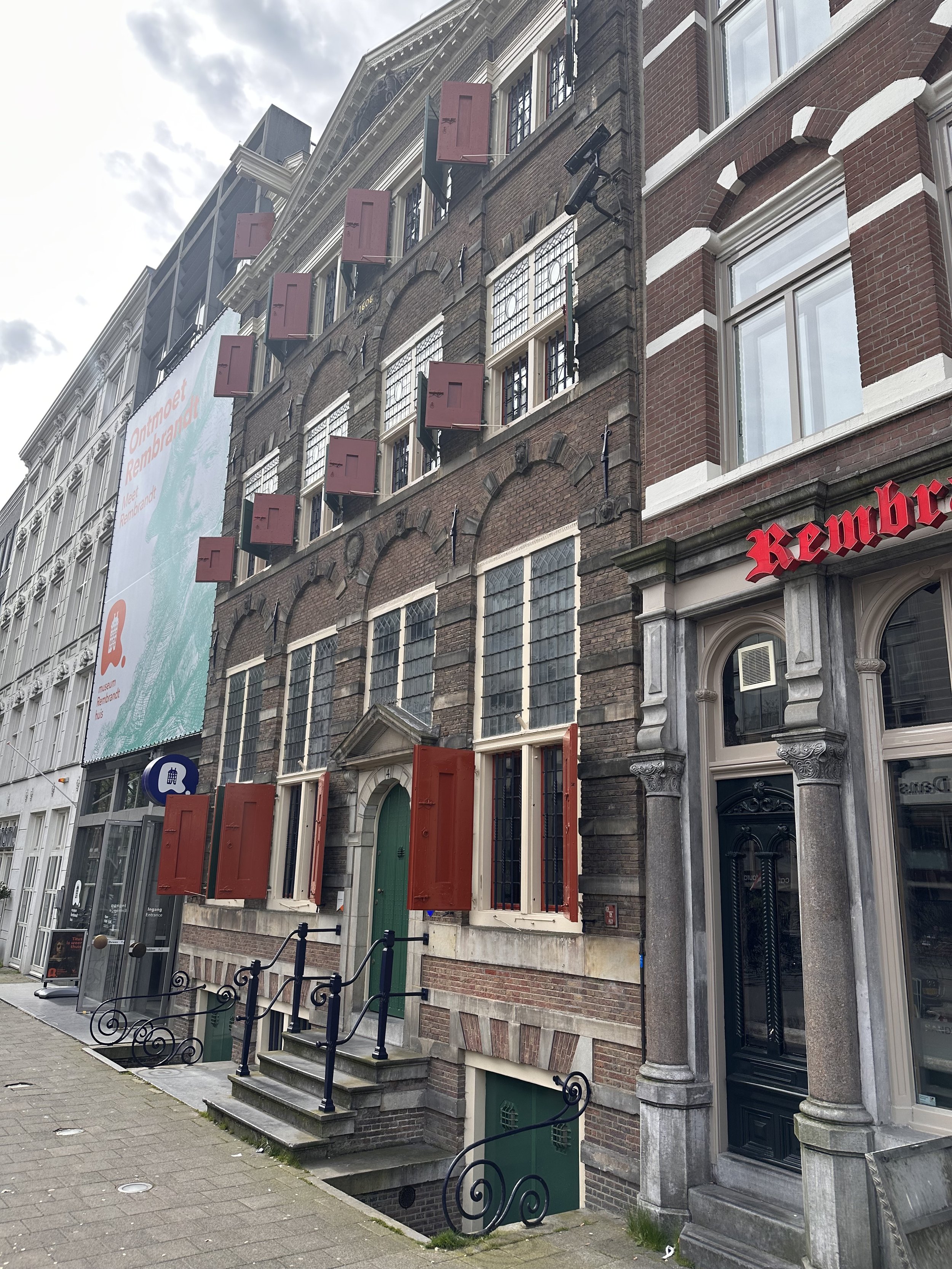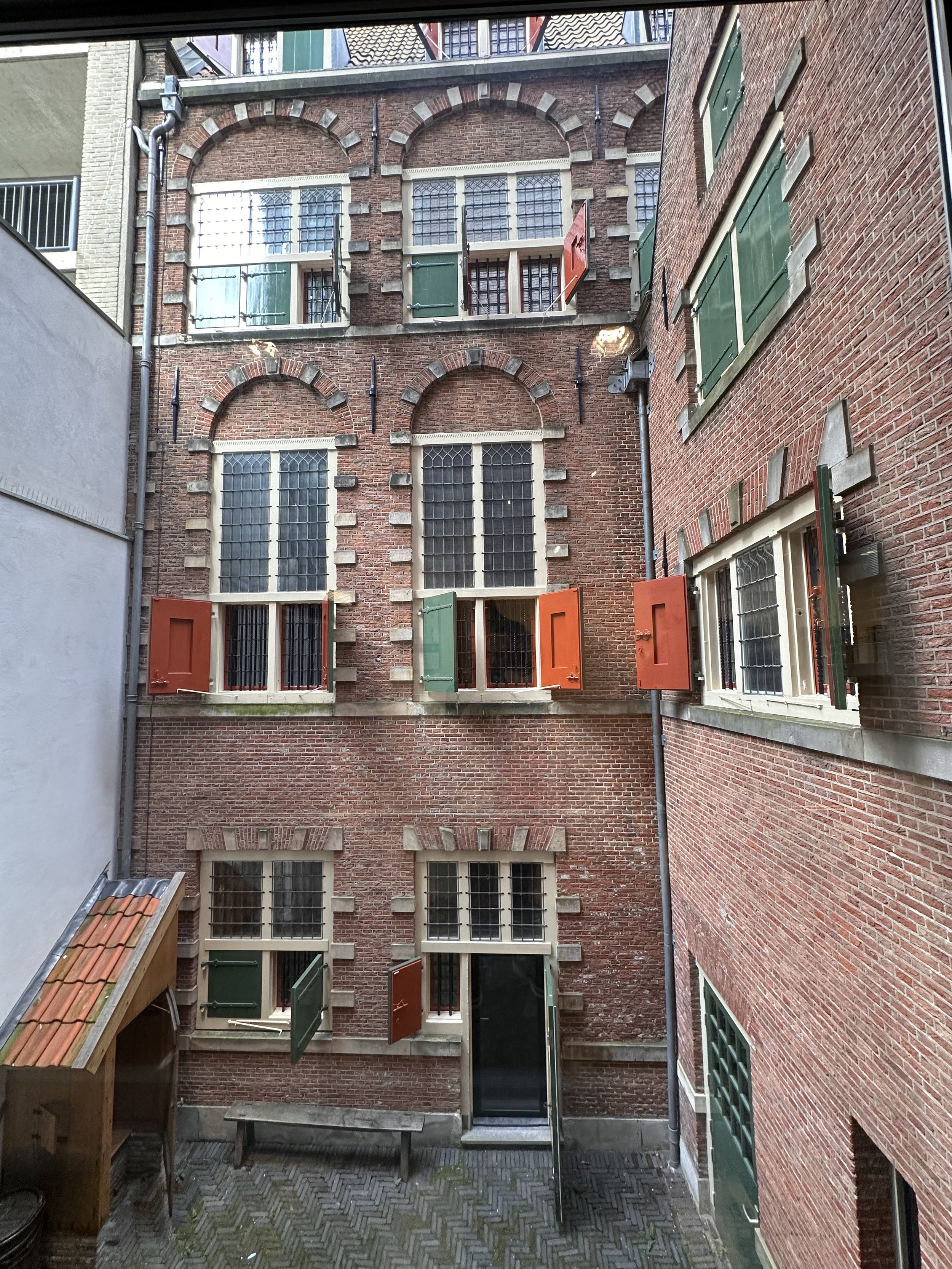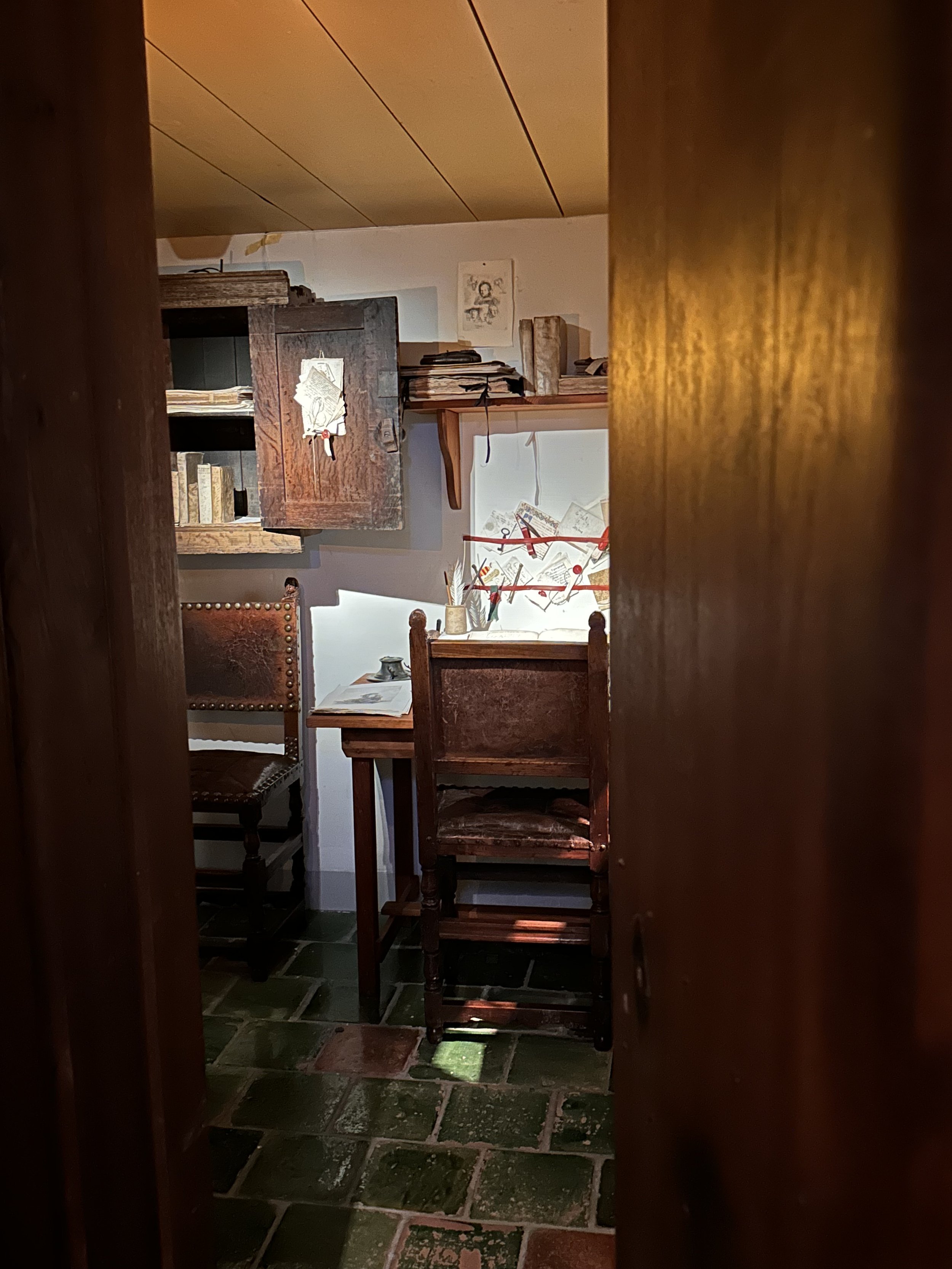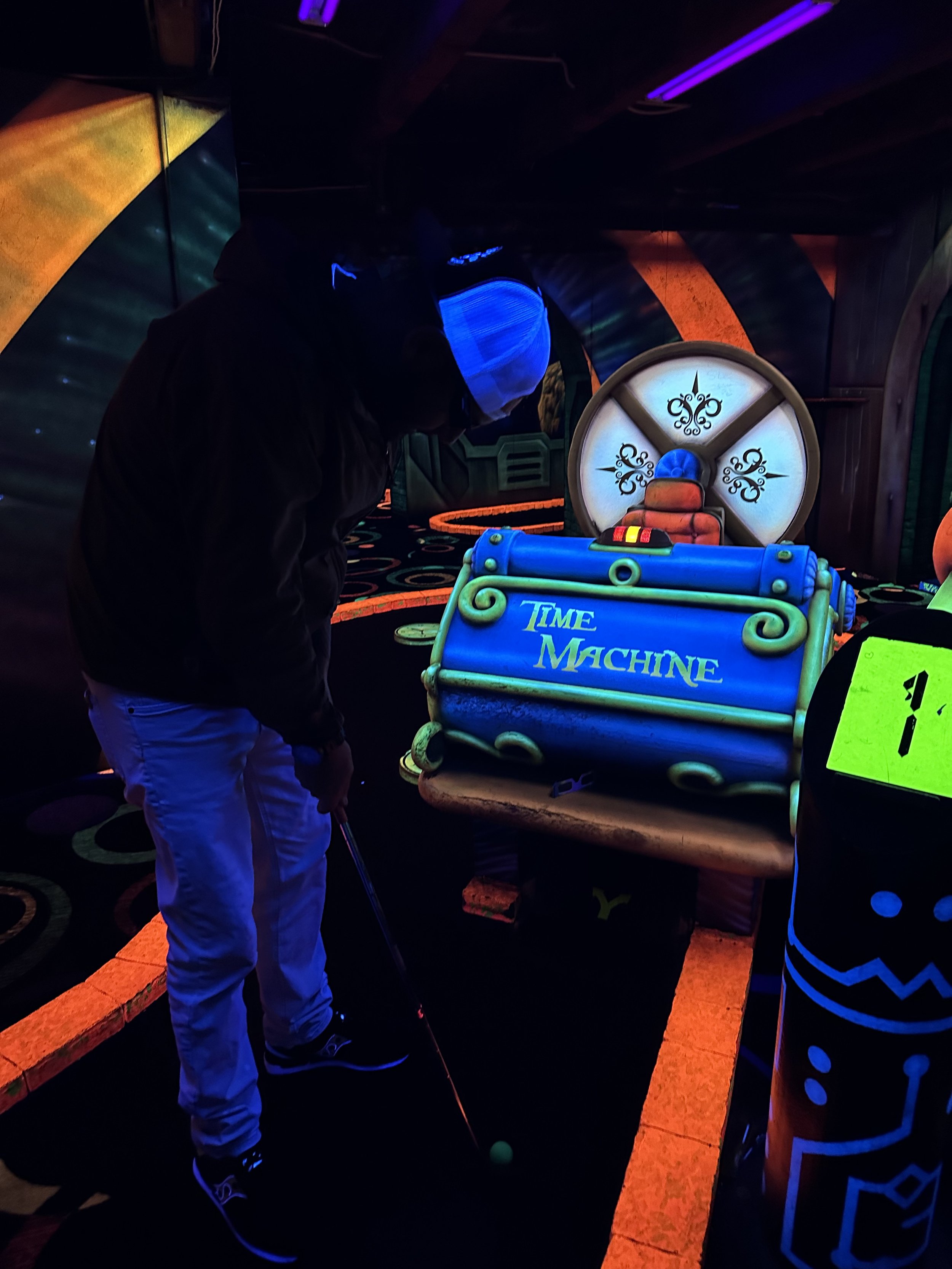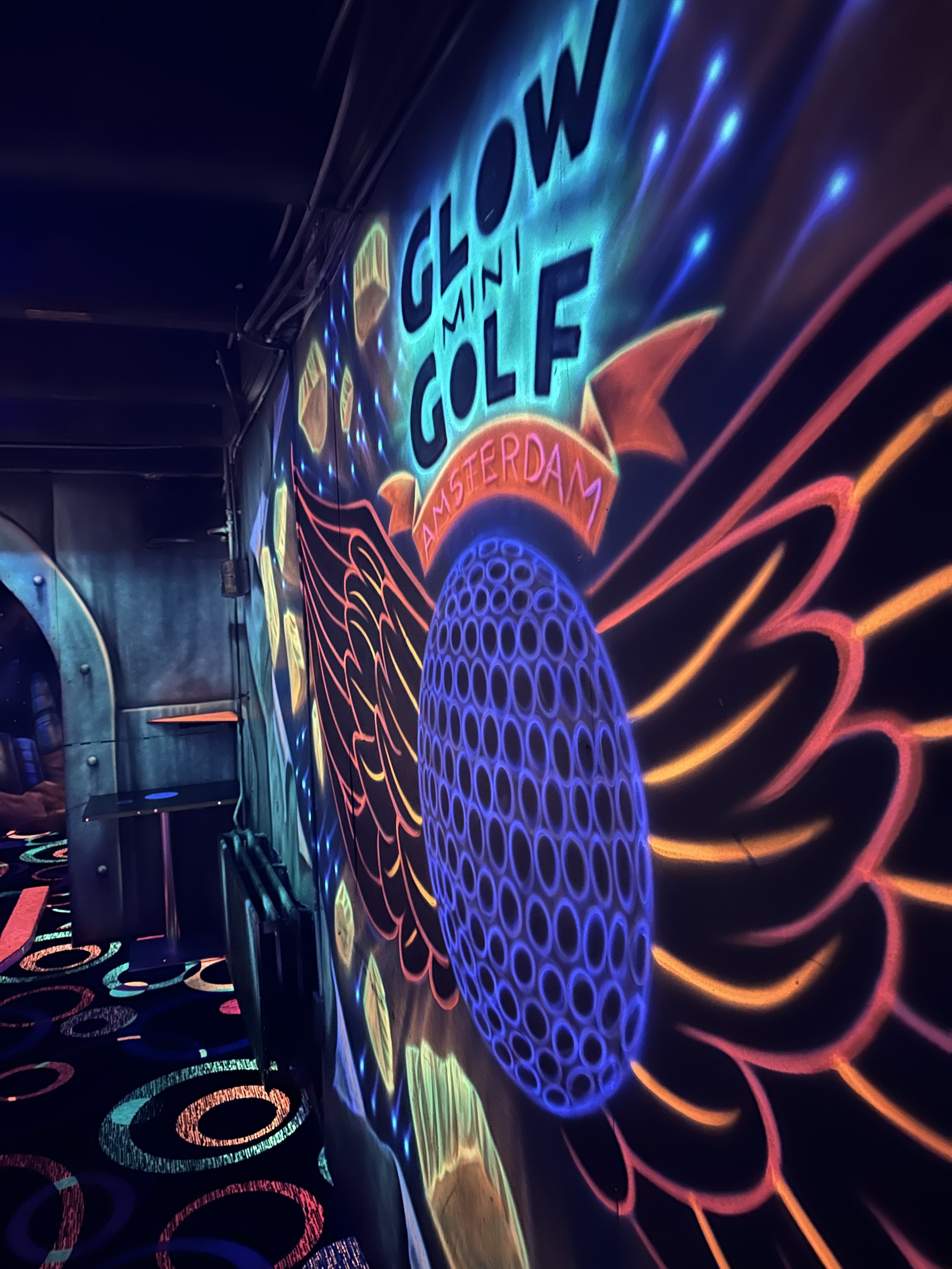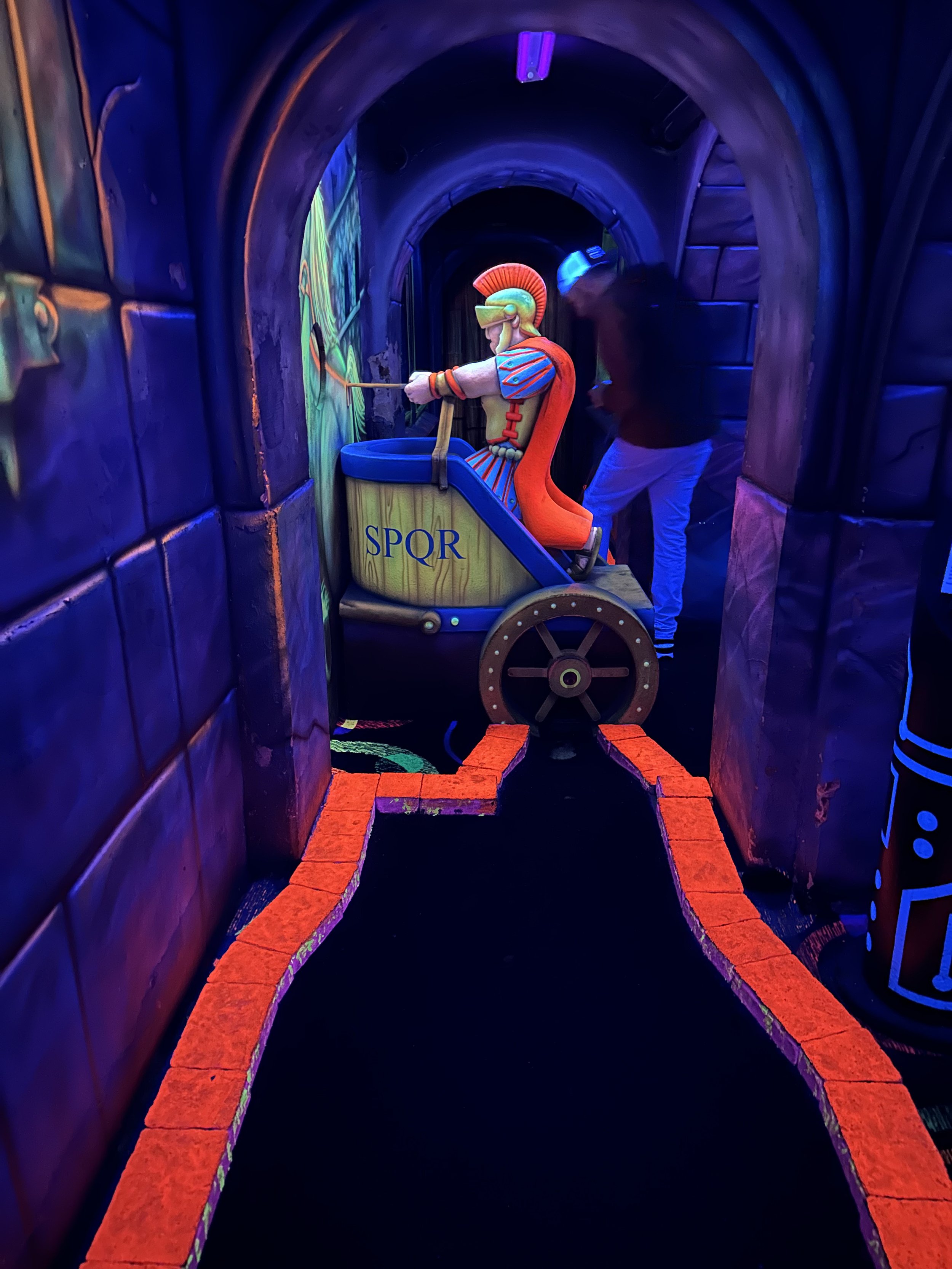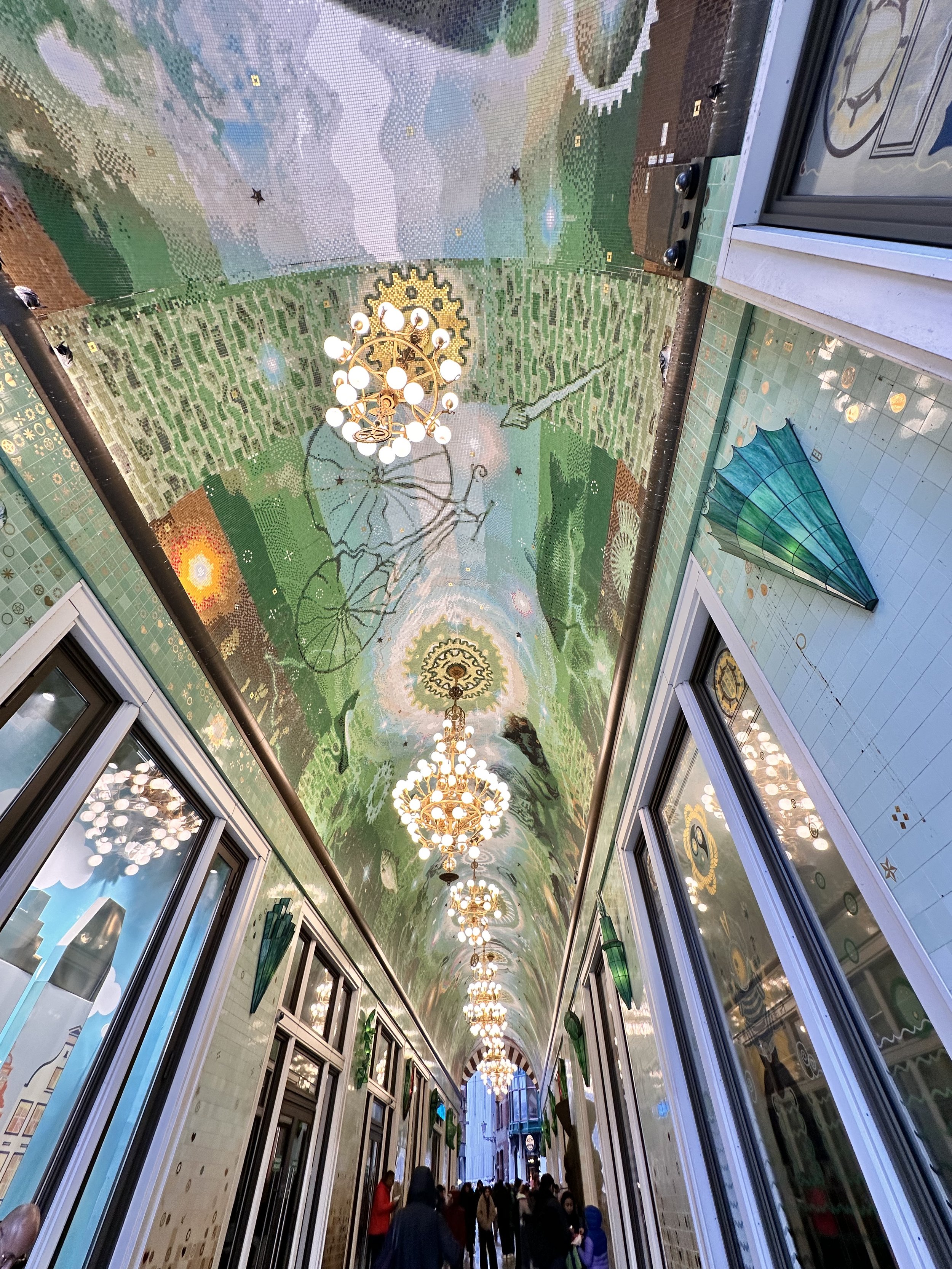Exploring Amsterdam, Netherlands
Updated October 9, 2024
Time needed in this city: 4-5 nights (especially if you’re going to take day trips)
Amsterdam is one incredible city (as is the country of Netherlands). It’s walkable, safe, relatively clean, and full of history, art, and flowers! Staying on the south side (zuid), we were able to walk among the peaceful canals of the suburbs and either walk or take a train to the north side (noord) if we wanted a more lively energy. We experienced museums, street art, incredibly fresh food (a lot of cheese shops were visited), got lost down alleyways, and took joy in walking over the canals. This city sets you back in time to an era when it thrived on industry (even though cars and motor scooters are everywhere) and best of all, the Dutch are so warm and welcoming that it makes sense why people come back time and again.
The below information is a complete guide of the best places to stay, the top rated places to dine and drink, and all there is to see and do. We’ve also included transportation tips, as well as a summary of the history of this favorite city!
Jump To:
Where to Stay
Apollo Hotel (Budget-friendly)
Built in 1920 as a pavilion for the Olympic games in 1928, Marriott lovingly restored this property with a strong art deco theme in mind. From the velvet mauve, rust, and emerald-colored chairs and stools, to the artifacts found on the property, to the brass egg chairs that grace the menagerie of the lobby, this hotel screams chic. It’s also super close to the museum district with great views of the canals, and has a great restaurant and lounge.
Hotel The Noblemen (Luxury)
Hotel the Noblemen has a long and steep history that dates back all the way to 1666 when Isaac Foucquier bought plot 14, along with the adjacent plot on Keizersgracht. Foucquier was a merchant in marble and traded along the Mediterranean coast. On the ground and first floor of the hotel, you can still see the original marble he used when building his home.
Over the years, the home was owned and occupied by other notable Dutch people and when it was renovated into a hotel that opened in 2021, its very bedrooms each became an homage to a notable Dutch nobleman, such as Rembrandt - the room we stayed in.
The spacious rooms, themselves, are jaw-dropping and unlike anything we have ever seen before. The meticulousness of every detail, the copper tub, the modern twist on classic artwork, etc. all add to the super sleek, super sexy vibe this hotel aims for.
Other recommendations
Where to Dine & Drink
Amsterdam is known for their artistic food scene and for good reason - they boast an impressive list of Michelin-starred restaurants! But, given the popularity of the city, unless otherwise noted in the list below, you must make reservations anywhere from a few days to a few weeks in advance.
3-Course Canal Cruise Dinner
This luxury dinner cruise on the Amsterdam canals shuttles you around the city’s UNESCO-listed center so you can see the sights minus any canal-side crowds. As you cruise, you’ll enjoy a 3-course dinner with food from a renowned Amsterdam restaurant. Numbers are capped at 16 on board.
Ashoka
Refined Nepalese cuisine.
Bak
Serves farm-to-table and sustainable meat dishes through a tasting menu only. NOTE: They do not cater to Celiac.
Barasti
Serves Korean fusion dishes with lots of gluten-free options.
Bhatti Pasal
Nepalese cuisine. Note that there are no reservations available - it’s first come, first served.
Bloem 36
A 100% gluten-free restaurant. While they are open for dinner, we suggest dining there for lunch.
Bougainville
An intimate setting, an open kitchen, and a breath-taking view of Amsterdam’s significant Dam Square. They serve both traditional and modern European cuisine. NOTE: They do have both a tasting menu, as well as a la carte. They are also NOT Celiac-friendly.
Cafe de Klepel
They provide a seasonal tasting menu that is changed daily. NOTE: There is no guarantee that the tasting menu will be gluten-free and there’s no sample menu to browse.
Cafe Piazza
Serving typical Italian fare, such as pasta and pizza. They do have a gluten-free menu and a dedicated place in their kitchen!
Caffe Toscanini
A traditional Italian restaurant that does serve gluten-free pasta!
Collins
Tapas-style plates with many gluten-free options. Note that Collins serves lunch and dinner while their sister restaurant, Little Collins, only serves brunch.
Craft Coffee & Pastry
A 100% gluten-free bakery and coffee shop.
Croque Madame
Hidden in an alleyway in the Red Light District, this dedicated gluten-free cafe has an incredible amount of food options for every time of day. Having Celiac and given its location, those with the same disease have personally sought this cafe out, which gives it a more communal feel. We recommend trying the cheeseburger and the sugar-free carrot cake.
D & A Hummus Bistro
As the name suggests, they serve a wide variety of hummuses in their Mediterranean bistro.
De Kas
Chic garden conservatory serving Mediterranean dishes made from organic ingredients grown on-site. NOTE: They can be accommodating to allergies but do say cross-contamination is always possible.
De Plantage
Serving middle eastern fare with many gluten-free options.
Foodhallen
Hip, cavernous space with stalls prepping global foods from burgers & hot dogs to dumplings & tacos.
Gartine
A great farm-to-table breakfast, lunch, and high-tea spot. NOTE: They do not have a gluten-free menu.
Gertrude
Vintage-style restaurant with a terrace offering seasonal small plates & a large wine list. They do have some gluten-free options available.
Hans Egstorf
Opened since 1898, this bakery serves traditional Dutch pastries (their stroop waffles are legendary).
Henri Willig Cheese Shop
Dutch cheese is the best. There, we said it. Never have we seen more kinds and flavors of cheese in our lives, so finding this cheese shop all over Amsterdam was amazing. We chose a truffle gouda, fig cheese dip, and the cheese slicer/grater combo (that we are now obsessed with). Best part - they ship to the states! Definitely visit a store, try some samples, and walk away with something!
Hous of Bols
Self-guided tour of noted Dutch gin museum including a tasting room, plus cocktails in the chic bar.
Kaia
Contemporary Greek cuisine.
Lolo Pizza
Located on the south (zuid) side of Amsterdam, this pizza place is known for their wood-fired pizzas - including fresh gluten-free ones! We ordered delivery, via Uber eats, which is a great way to go if you don’t want to go out.
Moeder’s
Traditional Dutch cuisine (very gluten-free-friendly).
Olijfje
We went there for dinner and we are sure glad we made reservations, because it was packed. Serving Mediterranean cuisine (they are extremely gluten-free-friendly), we recommend the humus, patatas bravas, and the chicken satay.
Pancakes
Restaurant 212
Another Michelin-starred restaurant, they provide both tasting and a la carte menus. If you have Celiac, I would advise to go elsewhere.
Restaurant Jansz
Small plates, sandwiches & salads, in several elegant, wood-clad dining rooms hung with artworks.
Rosalia’s Menagerie
A cocktail bar inspired by Dutch heritage with its rich history in the trade, distilling, and innovation. Established in 2017, their bar is located on the main floor of an inn on one of Amsterdam’s oldest canals.
Secret Garden
Holy. Mother. Are the only two words I can find to sum up my reaction to just how amazing this place is. Behind a faux greenery door is a magical restaurant that feels as though you’ve stepped back in time to the 1920s where huge conservatory rooms in mansions were a must. But, that isn’t where the awe moments stopped. The Peruvian-Japanese fusion small plates were incredible, as was their cocktail list and their service. we highly recommend the Padron Peppers (spicy), Esquites Corn Salad, Chicken Skewers, Wagyu Fried Rice, and their Pineapple Creme Brulee. We also recommend their Rose Martini and Purple Corn Old Fashioned. Check out Blackbeard’s video review below:
Senses
Senses Restaurant is a fine dining restaurant in the city center of Amsterdam, with an open kitchen where 'food art' that ignites the senses is created. Note that they do not tell you what the options are as they are all chef tasting menus. Those who have Celiac are encouraged to look elsewhere for dining.
Sherpa
Nepalese, Tibetan, and Indian cuisine. They have been open since 1989.
Spectrum
Located in the Waldorf Astoria, this two Michelin star restaurant serves global fare.
Sue
A gluten-free, lactose-free bakeshop!
The Living Room
Serving French fare in a casual, chic setting.
The White Room
The name “The White Room” is derived from the historical name of the room ‘De Witte Zaal’, the name that was given to the restaurant when it first opened in 1885. The room is listed as a monument and is considered to be the oldest restaurant of Amsterdam in original condition. NOTE: It’s a set menu that costs anywhere from 135-160 euro.
van Kerkwijk
Near the red light district, they serve comfort food, such as french fries, truffle lasagna, flatbreads, etc. NOTE: They are NOT Celiac-friendly.
Vuurtoreneiland
A once-in-a-lifetime dinner experience. A special boat takes you to a small, rugged island in the IJmeer with just a lighthouse, an old abandoned fort, and a large greenhouse dining room. They serve a five-course set menu of the fresh regional produce, cooked entirely on open flames.
NOTE: They are only open for the summer.
ZaZa’s
Serves an international menu of seasonal, fresh, homemade culinary delights, with influences from France, The Mediterranean, and Asia. There are only 12 tables in the restaurant and you must book online. NOTE: They do not cater to those with Celiac.
Zoldering
A bistro serving fresh dishes that change slightly from day-to-day.
Things to See & Do
Day Trips
Giethoorn and Zaanse Schans Windmills
Immerse yourself in Dutch culture on this full-day tour through the countryside with round-trip transport from Amsterdam. In addition to navigating, your guide offers little-known facts and anecdotes about each stop on the itinerary, including a traditional clog shop, artisan cheese factory, rural windmills, and the village of Giethoorn. Don’t forget your camera: The day also features a boat ride through Giethoorn’s waterways with rare views of the area.
NOTE: This tour will be canceled if it rains.
Tulip Field with a Dutch Windmill Tour
View the Netherlands’ colorful tulips without having to contend with crowds on this farm visit. While most tulip-viewing tours from Amsterdam take participants to the flower-growing fields around Lisse in South Holland, this tour takes you to a less-frequented tulip bulb farm in North Holland, where you'll learn about tulip-growing directly from the farmer, photograph the landscape, and enjoy lunch at the farm.
Zaanse Schans, Edam, Volendam and Marken
Gain an overview of the rural Holland region on this full-day tour to Zaanse Schans, Edam, Volendam and Marken, with hassle-free round-trip transfer from central Amsterdam. See the Zaanse Schans windmills up close, visit an Edam cheese maker, and sample fresh fish in Volendam, with historical insights and real-time commentary provided by your guide.
Historical Exploration
Anne Frank Museum
The Anne Frank House is a writer's house and biographical museum dedicated to Jewish wartime diarist Anne Frank. During World War II, Anne Frank hid from Nazi persecution with her family and four other people in hidden rooms, in the rear building of the 17th-century canal house. She did not survive the war but her wartime diary was published in 1947. Ten years later, the Anne Frank Foundation was established to protect the property from developers who wanted to demolish the block. The museum opened on May 3, 1960, preserving the hiding place, as well as displaying a permanent exhibition on the life and times of Anne Frank.
TIP: If you’d like a guided tour through the museum, as well as the Jewish Quarter, click here.
Begijnhof
The Begijnhof is the only inner court in Amsterdam which was founded during the Middle Ages. It’s unclear when exactly the Begijnhof was founded, though in 1346, the beguines still lived in a house there, which was completely water-locked until the 19th century.
Royal Palace
The palace was initially built as the Town Hall of the City of Amsterdam, opening on July 29, 1655. It astonishingly was built on 13,659 wooden piles. After the patriot revolution, the new Batavian Republic was forced to accept Louis Napoleon, brother of Napoleon Bonaparte, as King Louis I of Holland in 1806. After holding his court at The Hague and Utrecht, Louis Napoleon moved to Amsterdam, and converted the Town Hall into a royal palace for himself. Four years later, he abdicated the throne, though the palace didn’t become the property of Kingdom of the Netherlands until 1936. It’s now used for official royal functions and when not used, is open to public.
Religious History
Hidden in the heart of the city center is a well-preserved canal house from the 17th century. Narrow corridors and stairs lead to historically decorated living quarters, kitchens and bedsteads, ending in what is literally the highlight of the museum: a complete church in the attic. The attic church was commissioned by wealthy Catholic merchant, Jan Hartman, and dedicated in 1663.
While Hartman and his family lived in the canal house, a Protestant city government was in power, which made it illegal to practice the Catholic faith in public spaces (the former Catholic churches and monasteries were confiscated and used for Protestant worship). However, Hartman was so well-respected that he was permitted to host Catholic mass, quietly and discreetly, within his home, which is how the attic church was established.
Wandering the floors of the home and seeing how noblemen lived in those times brings both a sense of wonderment and eeriness as these homes are filled with life and death stories only the walls could now tell.
The New Church
After the Oude Kerk ("Old Church") grew too small for the expanding population of the town, the bishop of Utrecht gave permission to build a second parish church, the Nieuwe Kerk ("New Church"). Construction for it began in 1380 and finished in 1408. This new church was consecrated in 1409 to St. Mary and St. Catharine, with the first services held in 1410. The church was damaged by the city fires of 1421 and 1452, and burned down almost entirely in 1645, after which it was rebuilt. In 1578, the building became a Dutch Reformed church. A little over 300 years later, it underwent major renovation in 1892 until 1914, which added many neo-Gothic details. It was again renovated from 1959 until 1980, though it was so expensive to do, that it forced the church to be closed most of the time in order to save money on maintenance. Ownership was transferred in 1979 to a newly formed cultural foundation called, “The Nationale Stichting De Nieuwe Kerk”, which shifted the church from hosting religious services to exhibitions.
The Oude Church
The Oude Kerk (Old Church) is Amsterdam’s oldest building and youngest art institute (since 2012). The building was founded circa 1213 and consecrated in 1306 by the bishop of Utrecht with Saint Nicolas as its patron saint. After the Reformation in 1578, it became a Calvinist church, which it remains today. It stands in De Wallen, now Amsterdam's main red-light district.
The Arts & Sciences
Electric Ladyland
This tiny little storefront in Jordaan claims itself to be the first (and only) museum dedicated to fluorescent art in the world.
Hermitage Amsterdam
The Hermitage Amsterdam is a branch museum of the Hermitage Museum of Saint Petersburg, Russia, located on the banks of the Amstel river in Amsterdam. Interestingly, the building opened in 1682 as a retirement home for elderly women under the name Diaconie Oude Vrouwen Huys (Deanery Home for Old Women). Beginning in 1817, the facility housed both elderly men and women, and was renamed Diaconie Oude Vrouwen- en Mannenhuis (Deanery Home for Old Men and Women). The building was first named Amstelhof (Amstel Court) in 1953. In the 1990s, operators of the facility determined that it was inadequate to meet the modern needs of its residents and sought to build a new structure elsewhere. They offered the historic structure to the city of Amsterdam, who, in turn, leased it to the museum. The last inhabitants left the Amstelhof in 2007. On June 20, 2009, the museum was opened by Dutch Queen Beatrix and Russian President Dmitry Medvedev. The museum was open to the public the following day.
Moco Museum
An independent museum located in both Amsterdam, as well as Barcelona, Spain, Moco is dedicated to exhibiting modern and contemporary art with the likes of Banksy, Andy Warhol, Kusama, The Kid, and more. All of the art is donated from private collectors.
NOTE: Timed ticket entry is encouraged however, walk-ins are welcomed.
Rembrandt House
Built around 1606, this house was renovated around 1627, including giving it an extra floor and a new facade, prior to Rembrandt purchasing it on January 5, 1639 for 13,000 guilders. After his bankruptcy, it was auctioned in 1658 and sold for 11,000 guilders. It was used as a residence and was renovated several times over the course of nearly 250 years, though started to fall into disrepair in the early 20th century. In 1907, it was purchased by the municipality of Amsterdam, which donated it to the Rembrandthuis foundation. Between 1907 and 1911, the house was restored by Karel de Bazel, then opened as a museum on June 10, 1911 with Queen Wilhelmina and Prince Hendrik being the first visitors. It has been open ever since.
PRO TIP: Go first thing when it opens as it gets crowded quickly. It’s a small house on the inside with a lot of curved, steep staircases. If you are prone to claustrophobia or have a disability, this will not be the attraction for you.
Rijksmuseum
Founded in The Hague on November 19, 1798, Rijksmuseum moved to Amsterdam in 1808, where it was first located in the Royal Palace and later in the Trippenhuis. The current main building was designed by Pierre Cuypers and first opened in 1885. On April 13, 2013, after a ten-year renovation (costing € 375 million), the main building was reopened by Queen Beatrix. The museum displays only 8,000 art objects out of their total collection of 1-million, from the years 1200–2000.
PRO TIP: Book a day/time at least a month in advance if you need more than one ticket. We were unable to visit it as we waited until it was too late to go. If you want to skip the line and have a private tour, click here.
Stedelijk Museum
Opened in 1874, the museum is home to over 90,000 items including works by Jackson Pollock and Andy Warhol. The exhibitions cover paintings, drawings, graphic design, sculptures, sound, and installations.
Van Gogh Museum
As the name would suggest, the Van Gogh Museum is a Dutch art museum dedicated to the works of Vincent van Gogh and his contemporaries. Since June 2, 1973, it has not surprisingly displayed the largest collection of Van Gogh's paintings and drawings in the world.
TIP: Book a day/time at least a week in advance if you need more than one ticket. We were unable to visit it as we waited until it was too late to go. If you’d like a private tour, click here.
Unique Experiences
A’DAM Toren Lookout
Elevator with a light show to a 20-story rooftop with a restaurant/bar & an over-the-edge swing.
De Ton Ton Club
Ever since September 2013, the Ton Ton Club is the arcade bar of The Netherlands, offering retro arcades, board games, a ball pit, and a Japanese-inspired bar and restaurant.
Flevopark
This park holds the city’s only outdoor swimming pool. There’s also a tennis club, a microbrewery, Distillery ‘t Nieuwe Diep, and a market appropriately named, Marqt.
Glow Mini Golf
Blackbeard and I are mini golf aficionados, which means anywhere in the world we can find a course, we will. Amsterdam isn’t known for their mini golf, so finding this hidden place was exciting.
Glow mini golf is an 18-hole, 3D course in the basement of a sports bar. While it was fun to get in a round, make note of the following tips for the best experience:
The course is compact and finding the right holes are a bit confusing - don’t worry about the order necessarily.
Hole 13 was out of order when we were there, so we played an empty hole twice.
Large parties take a while so if you don’t care about skipping holes, play through.
Sadly, Blackbeard “stole” my mini-golf champion title… for now…
Heineken Experience
Founded in 1864, Heineken is one of the top three breweries worldwide. Its former 19th-century brewery facility is open to the public to tour with an education on how to taste beer, at the end.
Walking Tours
Tucked between the busy shopping corridors of Damrak and Nieuwendijk, this eye-popping, 165-foot-long passageway is an Instagrammer’s dream: a wonder of colored mosaic tiles, gilded chandeliers, stained glass, and patterned mirrors. A trio of Dutch artists reimagined the bland 19th-century arcade in 2016, turning the massive, barrel-vaulted ceiling into a underwater world inspired by the city’s canals, complete with fish, anchors, and of course, a bicycle. Other amusing details include clog-shaped wall sconces and a fountain inside in the mouth of a large fish.
Canal Tour
While cliche, it’s the best way to see Amsterdam - especially at night!
Hortus Botanicus
Founded in 1638, the greenhouse was used for practical purposes, serving as a herb garden for doctors and pharmacies. It’s now open to the public to learn more about what was grown and how the plants were used.
Keukenhof Gardens
Known as the “Garden of Europe”, it’s one of the world's largest flower gardens, covering 79 acres. Approximately 7 million flower bulbs are planted in the gardens annually.
NDSM
A neighborhood in Amsterdam North, NDSM is an arts community with a lot of unexpected features like an abandoned submarine, rusting trams, cafes made from greenhouses, and the world’s largest street art/graffiti museum. The land was previously owned by a ship building company, which explains its industrial nature, and a lot of visitors see that as part of its charm. It requires a ferry to get there.
Red Light District
If you have lived on this planet more than 30 years, you know what Amsterdam had always been synonymous with. While the Red Light District still exists, the laws have changed a bit, making it far less seedy and dangerous than it used to be (stag parties from the UK are nearly banned there).
While some of the “storefronts” still exist down a few of the alleyways, the main canal strip doesn’t show many signs of the old days, save for a few museums and shops. Instead, hash coffee shops are every few blocks, bars and restaurants are aplenty, and stores are open later.
Would we recommend staying there? No. But instead, spend time there during the day and night to take it all in - it’s worth it!
Vondelpark
In 1864, a group of citizens established the Association for the Construction of a Park for Riding and Walking. They bought several hectares of grassland and marshes at the rim of the city of Amsterdam, in order to create the new park. A year later, in 1865, it opened, though cost a small fee for non-members. It expanded over the next century, though was eventually turned over to the city for maintenance, due to the expense. In September 2008, adults were legally allowed to have sex in the park as long as they "took their garbage with them afterwards and never had intercourse near the playground.” Sexual activities were to be limited to the evening hours and night, though it’s since been made illegal twice (and still is).
Wandering Around
If you’re more into wandering a city and experiencing what strikes you, then this is the city to do it in! We got more joy from finding the alleyways, little iconography, and historic buildings than anything. Check out our video recap of the the other things we saw, below:
How to Get Around
There are multiple ways to get around town, so we’ve compiled a list of ways to do it:
From Schiphol airport - It’s very easy to take the train to Amsterdam’s Centraal station and take a local Metro line from there. However, if you’re lugging suitcases and depending on the time of year, it can prove to be too wet or too hot. We suggest taking a rideshare (cheaper) or taxi. There is also the option of hiring a private driver.
Centraal Train Station - We found this to be very easy to use for leaving the city - we went to Haarlem and Antwerp, via this station, though it also goes as far as Paris and Brussels. To get there, it’s best to take a local train on the red line (M52 for us) as it’s quite a walk from any point in the city. You may also take a rideshare, taxi, or bus if preferred.
Local Metro system - One of the safest, easiest, and cheapest ways to travel - we loved the Metro system. Open from 6am - 12:59am 7 days a week, make sure to grab your pass at a ticket machine at the top of the escalators (they look like ATM machines). They can do a one-day pass, two days, three days, etc. Once purchased, scan your ticket by tapping it on the bluetooth surface at the entry areas (there’s no code to use - it works as it’s printed). Note you must scan it on the way out as well.
By bike - You will quickly see that bikes, as well as motorbikes, are a plenty in the city - everyone bikes virtually everywhere (even in thunderstorms, which we witnessed). If you’re so inclined, there are many bike rental stations on the streets, as well as at the hotels.
On foot - If you’re walking anywhere, there is strict etiquette on this, as bike’s are given preference. The red paths are bike lanes and have the right of way, so in addition looking both ways for a car, also look both ways for a bike! The walking paths are usually stone or black asphalt and are usually narrower. If you’re in the heart of the old city, make sure to stay off the roads and on the walking paths! Cars, motorbikes, and bicycles have the right of way.
A History Summary
3000 years ago - Around the area of what later became Amsterdam, farmers lived along the prehistoric IJ river and upstream of its tributary, Amstel.
During the ages - This secluded area was able to grow into an important local settlement center, especially in the late Bronze Age, the Iron Age, and the Roman Age. Neolithic and Roman artefacts have also been found in the prehistoric Amstel bedding under Amsterdam's Damrak and Rokin (which can be seen in the last video at the bottom of this post).
10th century - The origins of Amsterdam is linked to the development of the peatland called Amestelle, meaning 'watery area”. In this area, land reclamation started as early as the late 10th century.
1170 - A major turning point in the development of the Amstel river mouth was the All Saint's Flood, which turned the shallow river IJ into a wide estuary, which from then on, offered the Amstel an open connection to the Zuiderzee, IJssel and waterways further afield. With now drier banks, the downstream Amstel mouth became attractive for permanent habitation.
1264 - 1275 - The construction of a dam (appropriately called “dam”) at the mouth of the Amstel was completed and the first settlement appeared in 1275.
1327 - The city’s name had developed into Aemsterdam. (Amstel River + Dam)
1345 - Het Mirakel van Amsterdam rendered the city an important place of pilgrimage with up to 90,000 pilgrims coming to the city,
14th century - Amsterdam flourished, largely from trade with the Hanseatic League.
15th century - The city established an independent trade route with the Baltic Sea in grain and timber, cutting out the Hanseatic League as middlemen, and also became the staple market of Europe for bulk cargo. This was made possible due to innovations in the herring fishery, from which Amsterdam reaped great wealth.
16th century - The Low Countries were part of the Hapsburg inheritance, which came under the Spanish monarchy. The Dutch rebelled against Philip II of Spain, who led a defense of Catholicism during the Protestant Reformation. The main reasons for the uprising were the imposition of new taxes, the tenth penny, and the religious persecution of Protestants by the newly introduced Inquisition. The revolt escalated into the Eighty Years' War, which ultimately led to Dutch independence. In addition, Jews from the Iberian Peninsula, Protestant Huguenots from France, prosperous merchants and printers from Flanders, and economic and religious refugees from the Spanish-controlled parts of the Low Countries found safety in Amsterdam. The influx of Flemish printers and the city's intellectual tolerance made Amsterdam a center for the European free press.
17th century - Amsterdam experienced what is considered its Golden Age, during which it became the wealthiest city in the Western world. Ships sailed from Amsterdam to the Baltic Sea, the Caribbean, North America, and Africa, as well as present-day Indonesia, India, Sri Lanka, and Brazil, forming the basis of a worldwide trading network. Amsterdam's merchants had the largest share in both the Dutch East India Company (VOC) and the Dutch West India Company. These companies acquired overseas possessions that later became Dutch colonies.
1602 - The Amsterdam office of the Dutch East India Company became the world's first stock exchange by trading in its own shares.
1609 - The Bank of Amsterdam began operations, acting as a full-service bank for Dutch merchant bankers and as a reserve bank.
17th century - 1814 - The city was a major destination port for Dutch slave ships, which lasted until the United Netherlands abolished the Dutch involvement in the trade in 1814 under pressure by the British government.
18th - early 19th centuries - The wars of the Dutch Republic with England and France took their toll on the city. During the Napoleonic Wars, Amsterdam's significance reached its lowest point, with Holland being absorbed into the French Empire.
The end of the 19th century - Sometimes called Amsterdam's second Golden Age, new museums, a railway station, and the Concertgebouw were built and in this same time, the Industrial Revolution reached the city. The Amsterdam–Rhine Canal was dug to give Amsterdam a direct connection to the Rhine, and the North Sea Canal was dug to give the port a shorter connection to the North Sea. Both projects dramatically improved commerce with the rest of Europe and the world.
WWI - Even though the Netherlands remained neutral in this war, Amsterdam suffered a food shortage, and heating fuel became scarce. The shortages sparked riots in which several people were killed. These riots are known as the Aardappeloproer (Potato rebellion). People started looting stores and warehouses in order to get supplies, mainly food.
WWII- Nazi Germany invaded the Netherlands on May 10, 1940 and took control of the country. Some Amsterdam citizens sheltered Jews, thereby exposing themselves and their families to a high risk of being imprisoned or sent to concentration camps. More than 100,000 Dutch Jews were deported to Nazi concentration camps, of whom some 60,000 lived in Amsterdam - the most famous being Anne Frank, who died in the Bergen-Belsen concentration camp. At the end of WWII, food and fuel became scarce, with many citizens traveling to the countryside to forage whatever they could find. They also stole timber from the former homes of Jews to heat their own homes.
20th century and beyond - As a result of the war, much of the city fell into disrepair. Plans began to modernize the city with new roads, metro stations, office building. While a bit of the Jewish area has been demoed, largely, the preservation society has kept the history in-tact with many of the historic buildings being preserved as monuments.



